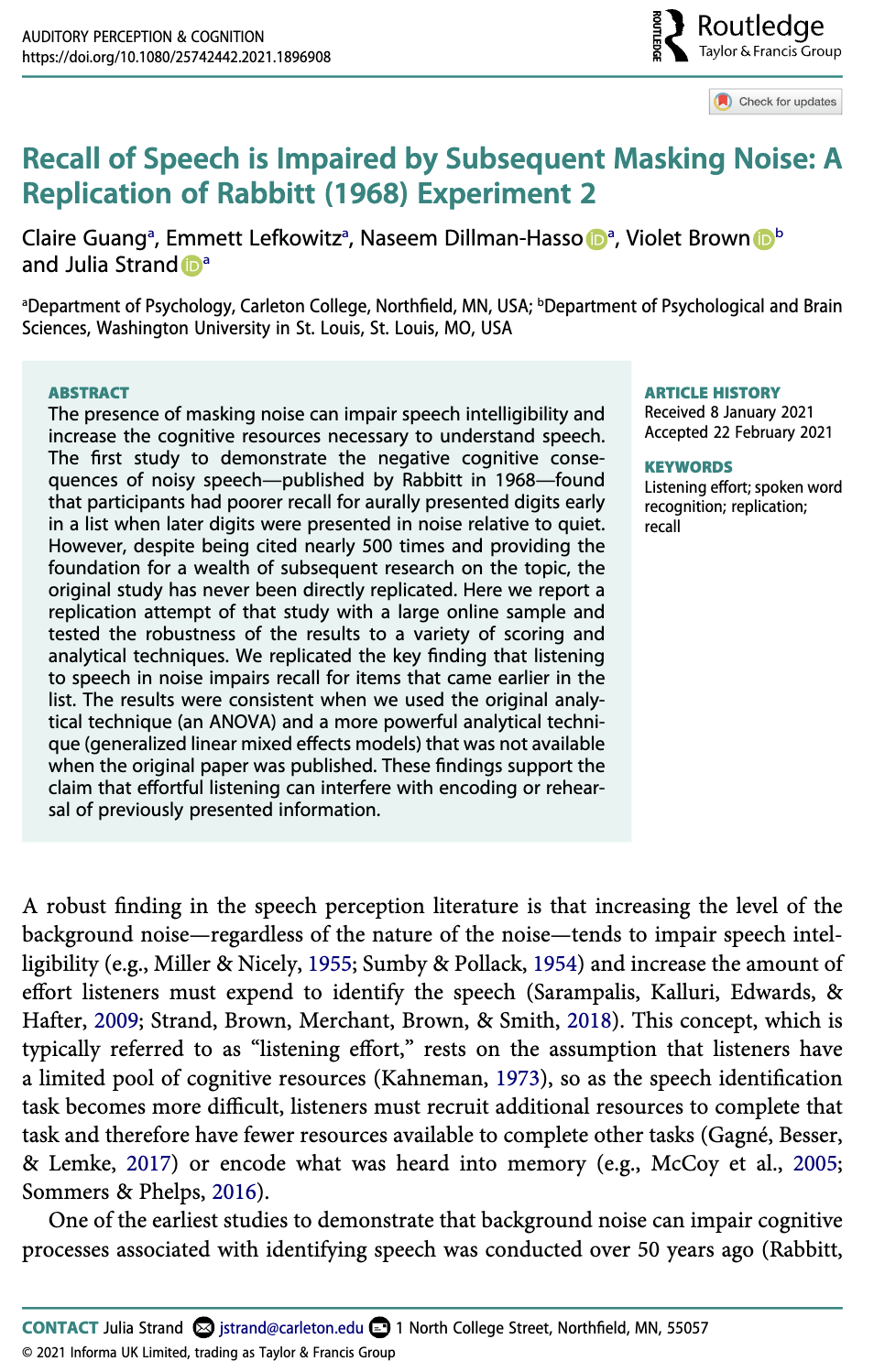
Recall of Speech is Impaired by Subsequent Masking Noise: A Replication of Rabbitt (1968) Experiment 2
The presence of masking noise can impair speech intelligibility and increase the cognitive resources necessary to understand speech. The first study to demonstrate the negative cognitive consequences of noisy speech—published by Rabbitt in 1968—found that participants had poorer recall for aurally presented digits early in a list when later digits were presented in noise relative to quiet. However, despite being cited nearly 500 times and providing the foundation for a wealth of subsequent research on the topic, the original study has never been directly replicated. Here we report a replication attempt of that study with a large online sample and tested the robustness of the results to a variety of scoring and analytical techniques. We replicated the key finding that listening to speech in noise impairs recall for items that came earlier in the list. The results were consistent when we used the original analytical technique (an ANOVA) and a more powerful analytical technique (generalized linear mixed effects models) that was not available when the original paper was published. These findings support the claim that effortful listening can interfere with encoding or rehearsal of previously presented information.








